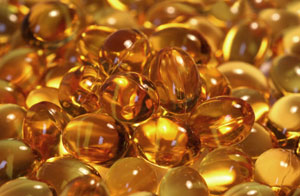Heart Disease and Firefighters: How and Why?
By John Hofman
It has been well documented that the #1 killer of firefighters is heart disease. Intervention strategies within a comprehensive health and wellness program have helped to reduce these numbers over the years, but there is still an alarming rate of firefighters who suffer from heart attacks each year.
Researchers at Iowa State University discovered that 86 percent of volunteer firefighters did not know their blood lipid and 47 percent did not know their blood pressure (1). Within the U.S. alone, more than 1 million people will suffer a heart attack within the next year, and it does not just affect the elderly. We are now seeing individuals as young as 21 suffer from heart disease. So why are firefighters at a more increased risk than the average population?
Simple: It's the job! But let's take a closer look at some of the things that lead to an increase in heart attacks.
Sleep plays an important role in helping our bodies to recover from stress, illness, and fatigue. If we do not get quality sleep, our resting metabolic rate will decrease, causing weight gain. A firefighter's "internal biological clock" is often disrupted throughout a shift, affecting the body's ability to regulate the sleep-wake system. Researchers at the Brigham and Women's hospital showed that prolonged sleep restriction with simultaneous circadian disruption decreased the individual's metabolic rate, thereby increasing over time the risk for diabetes. (2)
The University of Chicago went even further and showed there is a direct link between sleeping and an increased risk of stroke, heart attack, and congestive heart failure. (3) Their findings showed how an individual who sleeps more than eight hours and fewer than six hours had a significantly higher chance of experiencing chest pain or angina and coronary heart disease. Therefore, it is important to control the duration of restful sleep in a completely dark room to help reduce the chances of heart disease and other related illnesses.
Abdominal fat, also known as visceral fat, is generally associated with diabetes. However, there have been links to an increase of strokes through the hardening of the arteries. Increased visceral fat could lead to diabetes, which creates a change in blood vessels that reduce blood flow to the brain. Based on the findings at Iowa State University, 41 percent of volunteer firefighters were classified as obese and 35 percent as overweight. Therefore, it is recommended that a firefighter participate in physical activity and proper nutrition programs to reverse the side effects associated with belly fat.
Firefighters are often exposed to traumatic stress. Over a 30-year career, things tend to affect them both mentally and physically. According to researchers at the University of California - San Francisco, these exposures over a lifetime or career will boost inflammation in the body, even if they do not lead to post-traumatic stress disorder. (4) It was discovered that the greater the traumatic stress, the higher levels of inflammation within the body. Individuals with higher levels of inflammation within their body tend to have an increased risk of having a heart attack. Even if the firefighter adjusted to these traumatic events, the inflammation remained constant over a period of time. So the stress of the job can impact your health even if you don't have certain mental or physical symptoms. Intervention strategies to help combat stress, such as exercise, yoga, and other health-related activities, should be integrated at the start of a firefighter's career.
Firefighting itself is physically demanding and will eventually break the body down. According to a study performed at the Illinois Fire Service Institute (5), three hours of prolonged firefighting stiffens arteries and impairs heart function in young, healthy male firefighters. The same is seen within heavy powerlifters and ultra-marathon runners. This could affect those firefighters who do not value the importance of fitness and, therefore, exhibit several of the risk factors for cardiovascular disease, including being overweight and having elevated blood pressure and/or cholesterol.
Finally, your lungs. Breathing in toxic fumes and particles during overhaul, exhaust pollution from the apparatus bay, and exposures during most regular calls can adversely affect lung function. Lung function and obstructive airway diseases are strongly and independently associated with increased risk of heart failure. These results were not limited to smokers, but also to nonsmokers.
So what can you do?
1. Get an annual physical with a complete blood panel. In addition to the normal blood work, ask your physician to include the following:
a. C-Reactive Protein (CRP) is elevated in the blood when there is widespread inflammation somewhere in the body. The evidence now available indicates that inflammation and molecules such as CRP associated with inflammation may be as important as cholesterol in determining the development of atherosclerosis (hardening of the arteries) and heart disease.
i. You are at low risk of developing cardiovascular disease if your high sensitivity (hs)-CRP level is lower than 1.0mg/L.
ii. You are at average risk of developing cardiovascular disease if it is between 1.0 and 3.0 mg/L.
iii. You are at high risk for cardiovascular disease if your hs-CRP level is higher than 3.0 mg/L.
2. Testosterone: Lower testosterone levels have been shown to be an independent risk factor for worse outcomes among men and women with heart failure. It also has been associated with decreased survival for men with coronary artery disease.
3. forget about diets and low fat! eat a more healthful diet. There is no magic pill! Although there are some benefits to taking omega -3 (usually taken in a fish oil supplement), some studies have suggested otherwise. In an analysis of past studies, there was no difference in the number of heart attacks, strokes, or deaths among more than 20,000 people with heart disease who were randomly assigned to take either fish oil supplements or fish oil-free placebo pills. So eat better.
• Eat more fruits and vegetables, which are high in antioxidants. Good heart health depends on open, flexible arteries that can deliver blood efficiently throughout the body. Dark chocolate and cocoa, as well as plant-based compounds found in red wine and green tea, are high in antioxidants, which help fight cell damage from free radicals in the bloodstream that can cause fatty plaque to build up on artery walls
• eat more fiber: Aim for 35 to 40 grams of dietary fiber per day. Fiber helps to lower cholesterol by binding with it and pulling it out of the system.
• spice it up: Numerous studies have shown that spices can help improve cardiovascular health. Cayenne pepper is known to strengthen the heart, arteries, and capillaries and to lower the cholesterol level. Garlic is known to help lower blood cholesterol, and ginger is a natural blood thinner and anti-inflammatory agent.
4. Exercise, exercise, exercise. 30 minutes of aerobic activity is associated with a 70-percent reduction in heart attack risk over a year. Researchers from the Mayo Clinic analyzed its data and noticed that a brisk 10-minute walk a day results in a nearly 50-percent reduction in heart attacks versus doing nothing. (7)
5. Stay happy; be optimistic. It could save your life. A Duke University study of 255 doctors from several years ago found that 14 percent of those rated above average for hostility based on a personality test had died 25 years later--most from heart disease--compared with 2 percent of those who tested below the average. (8)
References
(1) Yoo, HL, Franke, WD. "Prevalence of cardiovascular disease risk factors in volunteer firefighters." Department of Kinesiology, Iowa State University. J Occup Environ Med. Aug 2009; 51(8):958-62.
(2) O M Buxton, SW Cain, SP O'Connor, JH Porter, JF Duffy, W Wang, CA Czeisler, SA Shea. "Adverse Metabolic Consequences in Humans of Prolonged Sleep Restriction Combined with Circadian Disruption." Science Translational Medicine, 2012; 4 (129):
(3) American College of Cardiology (2012, March 26). "Sleeping too much or too little can be bad for your heart." ScienceDaily. Retrieved April 21, 2012.
(4) O'Donovan A, Neylan TC, Metzler T, Cohen BE. Lifetime exposure to traumatic psychological stress is associated with elevated inflammation in the Heart and Soul Study. Brain Behav Immun. 2012 May; 26(4):642-9. Epub 2012 Feb 15.
(5) Fahs, Christopher A, Huimin Yan, Ranadive, Sushant, Rossow, et al. "Acute effects of firefighting on arterial stiffness and blood flow." Vasc Med; April 2011 16: 113-118
(6) Grace Rattue. "Lower Lung Function and Airflow Obstruction Raise Heart Failure Risk." Medical News Today. MediLexicon, Intl., 26 Feb. 2012. Web. 21 Apr. 2012.
(7) MayoClinic.com: Walking for Fitness: How to Trim Your Waistline, Improve Your Health.
(8) Barefoot JC, Brummett BH, Williams RB, et al. "Recovery expectations and long-term prognosis of patients with coronary heart disease." Arch Intern Med; 2011; DOI:10.1001/archinternmed.2011.41
 John Hofman is the strength and conditioning coach for the Sacramento (CA) Fire Department, He oversees the Wellness Center; coordinates the department's medical and fitness assessments; develops recruit fitness training, pre-employment medical and fitness evaluations; and assists the department's 20 certified Peer Fitness Trainers. In addition, he is the strength and conditioning coach for the California Regional Fire Academy, Sierra Fire Technology Program, Rocklin Fire Department, and South Placer Fire District. He also consults with the Fire Agency Self-Insurance System of California.
John Hofman is the strength and conditioning coach for the Sacramento (CA) Fire Department, He oversees the Wellness Center; coordinates the department's medical and fitness assessments; develops recruit fitness training, pre-employment medical and fitness evaluations; and assists the department's 20 certified Peer Fitness Trainers. In addition, he is the strength and conditioning coach for the California Regional Fire Academy, Sierra Fire Technology Program, Rocklin Fire Department, and South Placer Fire District. He also consults with the Fire Agency Self-Insurance System of California.

 John Hofman is the strength and conditioning coach for the Sacramento (CA)
John Hofman is the strength and conditioning coach for the Sacramento (CA) 